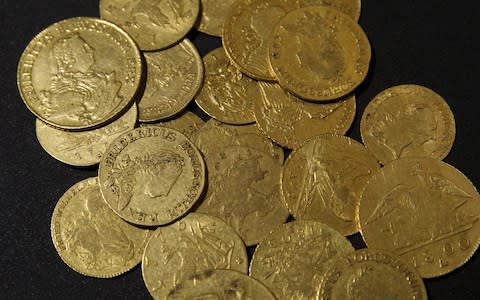Sliver of Germany's mighty gold stash goes on show for the first time
Germany’s central bank, the Bundesbank, has opened an exhibition of its hefty gold reserves after recalling half of its bullion from foreign vaults.
Worth €117 billion and weighing in at 3,400 tonnes, Germany's stockpile is the world’s second largest after the US, and some of it is now on display at the Money Museum in Frankfurt, the country’s financial hub.
The exhibition is the first time the public have had a chance to sneak a peek of its mighty gold stash, and features gold ingots and historical coins.
To keep its gold out of Soviet hands in case of a possible invasion during the Cold War, as well as for other historical reasons, bars of the yellow metal were stored in the treasuries of central banks in New York, London and Paris.
During the Cold War, the West German government shipped off 98 percent of its precious metal.
In 2012, a secret report from the Federal Audit Office was made public, in which bank officials were criticised for not carrying out regular spot checks on the stash.
A year later, the Bundesbank announced it would bring home half its 270,000 bars, citing a shift in geopolitical context.

Some analysts argue the real reason for recalling the gold was mounting public and political pressure, particularly in the context of the Eurozone debt crisis when gold was considered a safe haven.
The gold was repatriated through a series of clandestine shipments from the US Federal Reserve, the Bank of England and the Banque de France.
By the end of last year, half of the reserve was returned well ahead of schedule.
The entire reserve in France - some 90 tonnes - was transported to Frankfurt, while just over 1,200 tonnes remain in New York and around 430 in London as safeguards to buy foreign cash in case of a currency crisis.

The bullion is now kept in a secret location in the bank's basement in Frankfurt, guarded around the clock by the German federal police.
Germany’s riches were earned after World War Two, when exports surged resulting in large trade surpluses with other nations.
These surpluses were converted into gold under the Bretton Woods system.
The German affinity for gold is in part a vestige of the hyperinflation which rocked the Weimar Republic in the 1920s.
Germans are still known for being conservative with their money, steering clear of taking on debt and preferring to pay with cash rather than plastic.

 Yahoo News
Yahoo News 